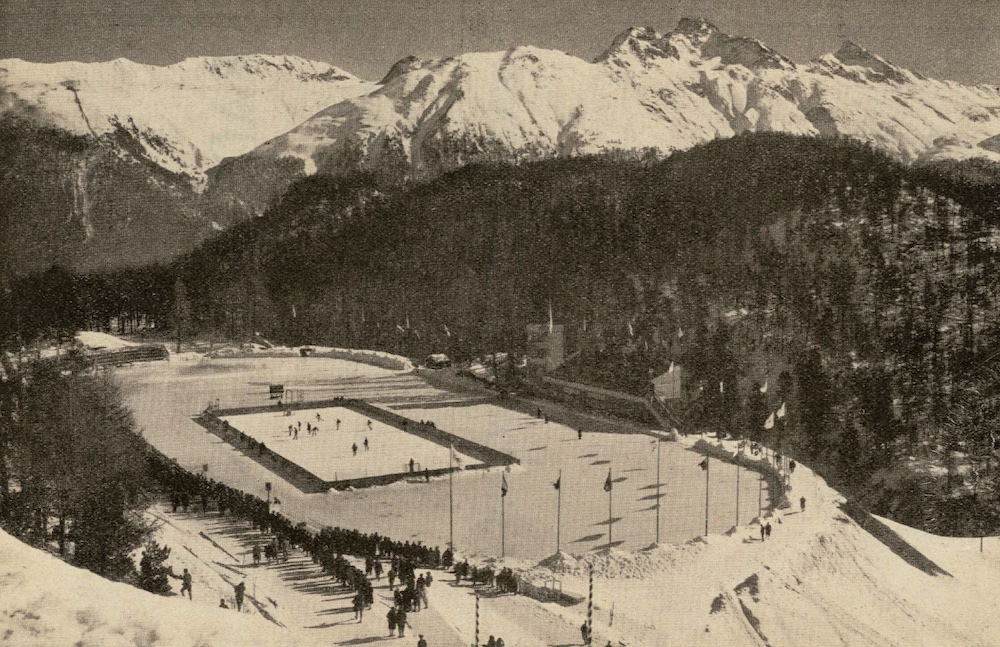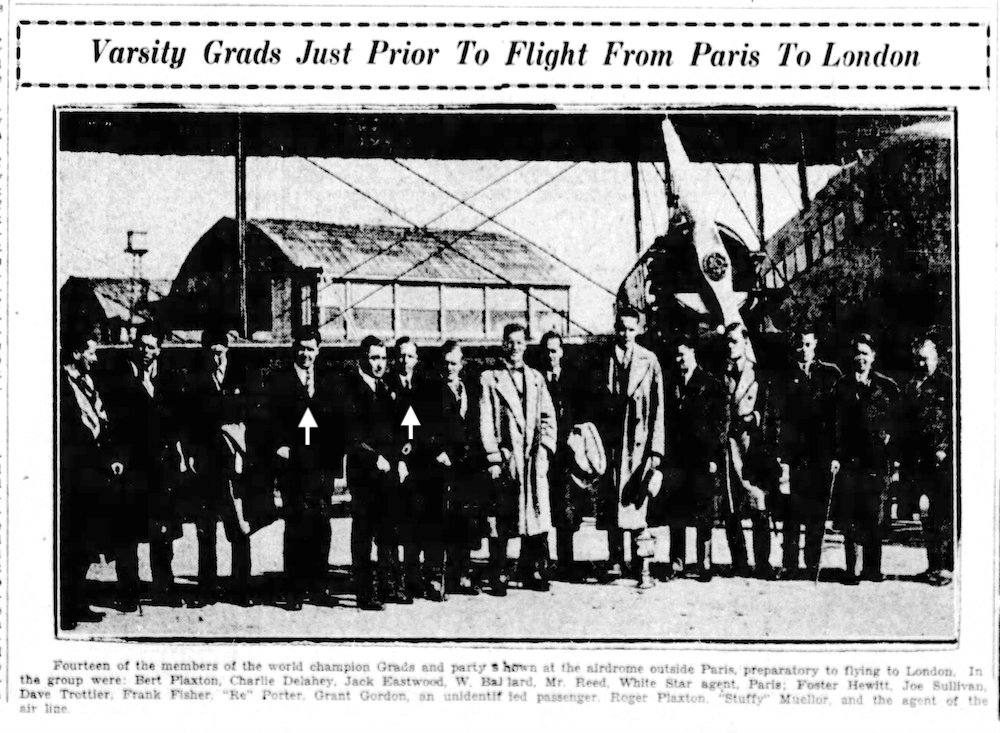On this date in history, March 21, 1928, Toronto newspapers were filled with stories and photographs welcoming home the Varsity Grads from Europe. Canada’s representatives in hockey at the 1928 St. Mortiz Winter Olympics had returned to the city the previous day (March 20 was a Tuesday ninety-five years ago) after a successful European tour and had been paraded from Union Station (on Front Street) to City Hall (now Old City Hall) at Bay and Queen in downtown Toronto.
As the name implies, Canada’s gold medal-winning hockey team was made up mainly of graduates of the University of Toronto. The Varsity team had reached the finals of the Allan Cup, Canada’s national senior amateur championship, in 1925 and 1926, only to be defeated by the Port Arthur Bearcats in both seasons. Returning to the final as the Varsity Grads in 1927, they defeated the Fort William Forts in a tight series in Vancouver to earn the right to represent Canada at the 1928 Winter Olympics.

on March 21, 1928. The bottom is from the Sault Ste. Marie Star on March 28.
To prepare for their European journey, the Varsity Grads withdrew from competition in the Ontario Hockey Association for the 1927-28 season. From November 26, 1927, through January 21, 1928, the Grads played a series exhibition games before departing for Europe from Halifax on January 22, 1928. If I counted right, a total of 14 games were scheduled, although one was never played. Of the games they did play, most resulted in one-sided romps. Among the very few close games, the Grads defeated the University Club of Boston 2-1 in Boston on January 6, 1928 and suffered their only loss when they were beaten 1-0 in a rematch two nights later.
After playing their final home game in Toronto on January 17, 1928 (either a 10-2 or 12-2 victory playing one period against each of three different Toronto teams at Varsity Arena), the Grads played in Kingston, Montreal, and Halifax on January 18, 19, and 21 and then sailed for France.

The Grads had a rough crossing before arriving in Cherbourg, on Sunday, January 29 after six days and 18 hours at sea. They had traveled with the figure skaters, speed skaters, and skiers who would also be representing Canada at the Olympics. All athletes made their way to Antwerp the following day, but while the other competitors left the Belgian town immediately for St. Moritz, the hockey team stayed in Antwerp a while longer. They had their first workout on Olympic ice on February 6. The hockey tournament began on February 11, 1928.
The United States didn’t send a hockey team to Switzerland for the 1928 Winter Olympics, and so the decision was made to split the 10 European countries into three round-robin groups, with the winners of each advancing to the final round to play off with Canada, who had been given a bye. After nearly a month without any games, Canada then played three times on three straight days, but it didn’t matter. The Grads defeated Sweden 11-0 on February 17, Great Britain 14-0 on February 18, and then Switzerland 13-0 on February 19 to win the gold medal.

After the 1928 Winter Olympics closed on February 19, the Grads embarked on a European tour. They defeated the Austrian Olympic team 13-0 in Vienna on February 22, and then traveled to Berlin where they defeated Germany 12-2 and Switzerland 12-1 on February 25 and 26. The game with Switzerland may have been played in Davos, although some newspapers report the scores as 13-2 and 12-0, and also list a 6-0 score at a different game in Davos, so it’s a little unclear.
The Canadians finally had some real competition in Berlin on February 27 … when the Olympic starters played their own backups and scored a 5-4 victory. Some members of the team then flew from Berlin to Paris, where they beat a Paris team 6-0 on March 2. Next, the team flew to London, where they defeated an English team 11-4 on March 8. The Grads were to be presented to the Prince of Wales (the future King Edward VIII, briefly) the following day — although it appears he abdicated on them too! He is said to have sent a telegram congratulating the team on its gold medal victory and expressing regret that he would not be able to entertain them in person (as he had with the Toronto Granites following their Olympic championship in 1924).

On March 10, 1928, the Varsity Grads sailed for home from Liverpool. They arrived in Halifax on March 17, and then played a final exhibition game either that night or the next. After defeating the Moncton Atlantics 6-1, they boarded a train home for Toronto. Delayed 14 hours by snow in New Brunswick, they arrived in Montreal some time between midnight and 2 am in the early morning of March 20. Still, they were able to find food and drink in the city before returning to their train car to sleep until late morning when they departed for Toronto.
Scheduled to arrive at Union Station at 5:40 in the afternoon, the players were greeted at the train platform by family and friends who hadn’t seen them in two months. “But,” as the Toronto Star reported, “at every step towards the exits they became more and more public property.”

Greeted at the end of the “underground station labyrinth” by representatives of the city and their university, they then stepped out into a huge traffic jam on Front Street. Loaded into cars, they were led by horses, motorcycles, and marching bands to City Hall, where the Mayor of Toronto, Sam McBride, made a welcoming speech. Each player was presented with a diamond stickpin before addressing the crowd themselves. And for those who couldn’t make it out to see the players in person, the whole thing was broadcast on the radio.